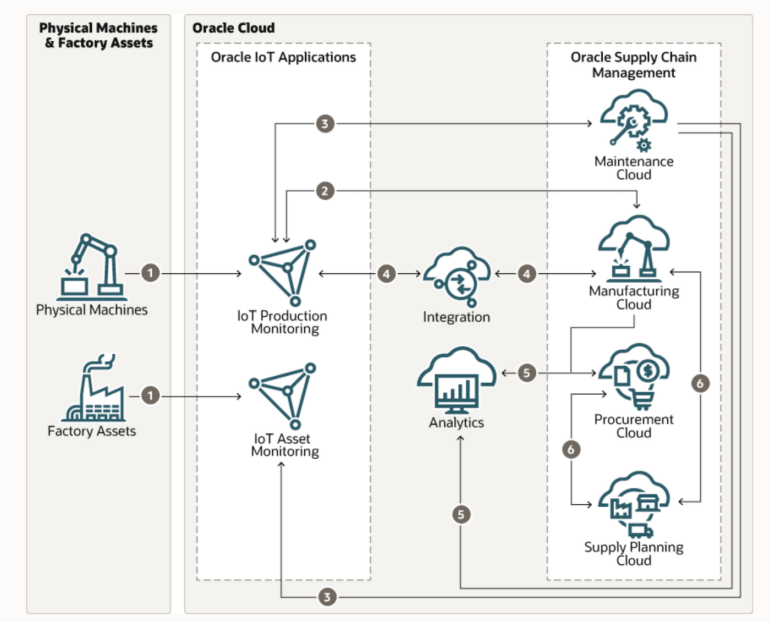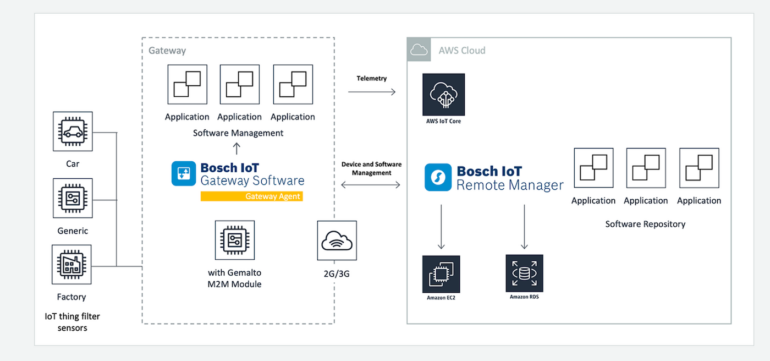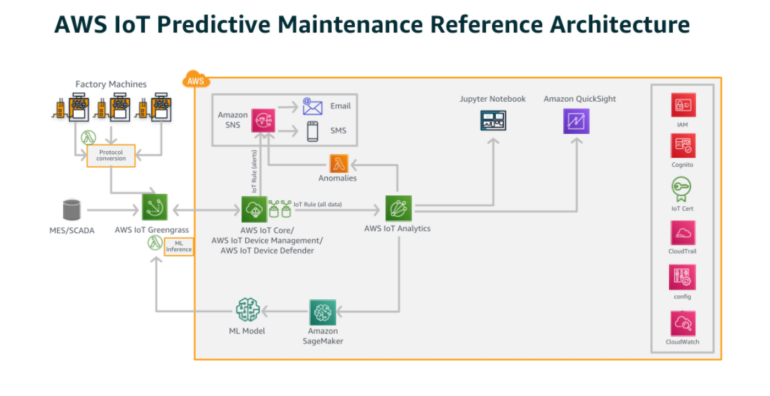Oracle vs AWS: Compare top IIoT products
Modern industries are going smart. It’s now all about smart manufacturing, smart monitoring, smart logistics and other smart nomenclatures. This industrial trend is gradually ending the era where mechanics were emphasized over intelligence in industrial machines, and this new trajectory owes its evolution to the Industrial Internet of Things.
SEE: Hiring Kit: IoT developer (TechRepublic Premium)
IIoT is turning industries into a chain of smart machines that can self-monitor, predict potential problems and maintain less downtime for overall efficiency. Oracle IoT and AWS are two popular Industrial IoT service providers helping industries with their IIoT goals. Here is a comparison of both platforms to enable you to pick the one suitable for your business.
Jump to:
An overview of Oracle IIoT platform
The Oracle IIoT platform enables businesses to connect their devices to IoT technology to facilitate a chain of industrial machines that can analyze data in real-time and integrate it with enterprise applications, web services, sensors and other Oracle cloud services.
Oracle’s IIoT product is a Platform as a Service which is designed to provide businesses with more device visibility and insights by monitoring and capturing sensor data from connected devices. This connection ensures smart manufacturing technology, connected logistics, connected assets and workplace safety. The diagram explains how Oracle IoT improves production efficiency by synchronizing your machines with the Oracle IIoT platform (Figure A).
Figure A.

An overview of AWS IIoT platform
The AWS IIoT platform offers enterprises a gateway to connect, manage and scale their industrial machines without managing the servers that power this connection. The platform comes as a managed cloud service that engineers a seamless stream of connected devices that can communicate with each other while also having the capacity to generate, manage and analyze data for predictive monitoring.
With about 12 major IIoT core offerings, such as IoT Greengrass, AWS IoT Core and AWS IoT Device Management, enterprises can build IoT solutions using AI/ML integrations, scale their IoT products and enhance IoT innovations (Figure B).
Figure B

Feature comparison: Oracle vs AWS IIoT products
| Feature | Oracle | AWS |
|---|---|---|
| Communication protocols | MQTT and HTTP | MQTT, HTTP, WebSockets and LoRaWAN |
| Third-party integrations | Yes | Yes |
| Predictive maintenance | Yes | Yes |
| IIoT services coverage | Narrow | Broad |
| Advanced analytics and machine learning capabilities | Yes | Yes |
Head-to-head comparison: Oracle vs AWS IIoT products
Integration capabilities
Oracle and AWS IIoT platforms offer integration with other tools and services to accommodate IoT use cases, such as data visualization, analytics and automation. Oracle IIoT provides pre-built integrations with other Oracle products, such as Oracle Cloud Infrastructure, Oracle Cloud Infrastructure Data Flow and Oracle Cloud Infrastructure Data Catalog. It also integrates with third-party tools such as SAP and PTC ThingWorx using REST APIs.
On the other hand, AWS IIoT integrates with other AWS services, such as AWS Lambda, AWS Greengrass and Amazon Kinesis. It also integrates with third-party tools and services, including Salesforce, Tableau, and Microsoft Azure.
Although both platforms offer similar functionality and integrations, Oracle IIoT is better suited for organizations that already use Oracle products and services, while AWS IIoT is a better fit for organizations that already run other AWS services.
Predictive maintenance
Predictive maintenance is a technique used to predict when equipment or machinery is likely to fail so that maintenance can be scheduled in advance and downtime can be minimized. Both Oracle IIoT and AWS IIoT platforms offer solutions for predictive maintenance.
Oracle IIoT offers a suite of applications, including the Oracle IoT Predictive Maintenance Cloud Service, which uses machine learning algorithms to analyze sensor data from devices and predict when maintenance is needed. Figure C below shows Oracle predictive maintenance dashboard, displaying various functionalities of a machine and different health scores.
Figure C

AWS IIoT also offers a number of solutions for predictive maintenance, including AWS IoT SiteWise, which allows users to collect and organize data from industrial equipment and use it to predict equipment failures. Additionally, AWS offers a number of other machine learning services, such as Amazon SageMaker, that can be used to build and deploy predictive maintenance models. Figure D below represents a typical AWS predictive maintenance architecture.
Figure D

IoT communication protocols
IoT protocols define how the exchange and transmission of data between the internet and devices at the edge will occur to ensure reliability and interoperability. Oracle IIoT provides a range of protocols, such as MQTT and HTTP, for device connectivity.
On the other hand, AWS IIoT supports MQTT, HTTP, WebSockets and LoRaWan as its standard protocols. Additionally, AWS provides a feature called IoT Device Defender, which allows you to monitor and secure the communication between devices and the cloud.
Security
Both Oracle and AWS IIoT platforms offer robust security features to protect connected devices and the data they transmit. Oracle provides security features such as device registration and authentication and secure data transfer using protocols such as MQTT and HTTPS. Oracle IIoT also supports integration with other Oracle security products, such as Oracle Identity and Access Management and Oracle Key Vault.
AWS IIoT, on the other hand, supports similar security features, including device authentication and secure data transfer using protocols such as MQTT, HTTPS and WebSockets. It also provides access control permissions using AWS Identity and Access Management and allows for secure communication between devices and the cloud using mutual authentication and secure sessions. Further, AWS IoT supports integration with other AWS security services, such as AWS Key Management Service, which allow users to create and manage cryptographic keys across applications centrally.
Choosing between Oracle and AWS IIoT platforms
Overall, Oracle and AWS IIoT are both powerful products serving various industries with a wide range of services for building and deploying IIoT applications.
Oracle IIoT platform is well-suited for organizations looking to integrate IoT with existing Oracle enterprise systems and gain insights from their data, while AWS IoT is a more simplified platform that is designed for scalability and ease of use.
Although both IIoT providers offer similar features for IIoT services, AWS IIoT has a broader range of services and wider integration with other services. In addition, Oracle IoT is more geared toward enterprise customers, while AWS IoT is more versatile and can be used by businesses of all sizes.
In terms of pricing, both Oracle and AWS IIoT cloud services have a pay-as-you-go pricing model, which means you only pay for the resources you use. However, the AWS IIoT platform offers a free tier for certain usage of each service, whereas Oracle IoT Cloud does not provide a free tier.
Check out our other IIoT product reviews with IBM Watson vs Azure and AWS vs Azure.
For all the latest Technology News Click Here
For the latest news and updates, follow us on Google News.
